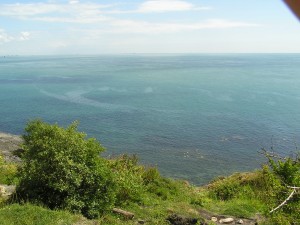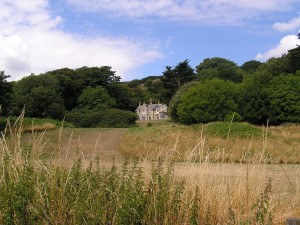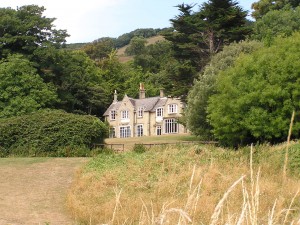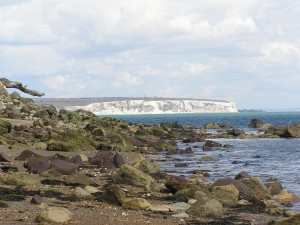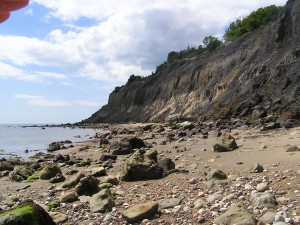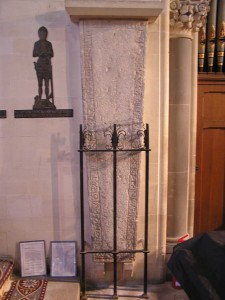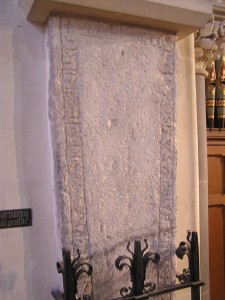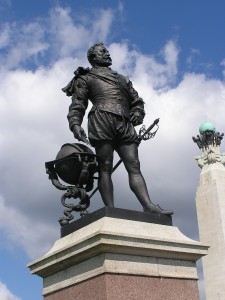The late Grand Duchess Vladimir of Russia was a jolly, buxom lady with dark, heavily-coiffed hair and of decidedly Asiatic appearance – she was, after all, Georgian. Peter-Gabriel de Loriol Chandieu, effortless writer and gifted flaneur, recalls the following encounter:
The recent death (23/5/2010) of Leonida Bagration-Moukhransky, the late Grand duchess Vladimir of Russia, and her subsequent obituary on the 28th May in the Times reminded me of an event in her life that brought the reality of her situation into sharper perspective.
I was a very young (just 21) manager of a very exclusive ‘private’ hotel in Chelsea in the late 1970s. Private inasmuch as it was not classed as a hotel, but just as ’11 Cadogan Gardens’, a superior ‘Bed and Breakfast’ for patrons who were habitués or recommended by people known to the manager.
As such, the hotel was a magnet to visiting grandees of all declinations; diplomats, actors, politicians, heads of state, monarchs or elected, senior members of various professional bodies, who wished to come to London in relative anonymity to visit friends, relations or just to shop. They loved the relative cheapness of an establishment of 63 bedrooms and suites with en suite bathrooms, which catered to their every whim, in the centre of London, and with a high Victorian décor and service that put the five star hotels to shame!
On that particular Friday I was waiting impatiently to interview a new member of staff, a cleaner, sent by an agency. She was late – it wasn’t a good start! I’d seen half a dozen and they were either too young, too stupid or couldn’t speak a word of English. I sat in my pin-striped trousers, black jacket, white shirt and black tie behind my huge Victorian desk in my oak panelled office, occasionally looking out of the window onto the street. This one wouldn’t be taken on either, she was too late.
A discreet knock at the door followed by the perpetually surprised face of Antonio, the supremely efficient Spanish Head Porter (on whom, I was sure, the Fawlty Towers Manuel was based), saying that the lady had arrived. I asked him to show her in.
She was large, dressed in an almost bohemian way with swathes of tawny coloured capes and scarves carpeted around her busty carapace. She smiled perfunctorily and plonked herself into the chair opposite me. Irked, I started with the obvious questions: did she speak English, did she know London…the obligatory ‘of course’ followed my every question, at first patiently and then with marked indifference and a glimpse of what I surmised as a bad temper. Not good! I thought I’d put her off by telling her she would be working for six days a week and one Sunday in every four weeks, the times she would be expected to be at work and she would also be fitted with a uniform. It was all too much for her. She bulked up to a standing position.
“How dare you speak to me like this – don’t you realise who I am? I am the Grand Duchess Vladimir of Russia.” Her whole body trembled with rage.
“…And I’m the Emperor of France… “. This charade had gone quite far enough! She was rude, arrogant and I would speak to the agency. What agency? Just then the door opened a crack and a worried Francisco looked around the door. He told me that the lady’s husband was her and would like to introduce himself.
A slim, well dressed middle aged individual walked into the room with a smile on his face. In Spanish accented English he presented himself as Vladimir Grand Duke of Russia. You could have heard a pin drop! She broke into a smile and presented her husband to the ‘manager’ of the hotel. I, meanwhile, couldn’t stop smiling, at myself, for having made history and put my usual two feet in it, as all Sagittarians do. We did part as friends! Francisco couldn’t stop laughing for days – Senor Peter had done it again!
Pg de Loriol

